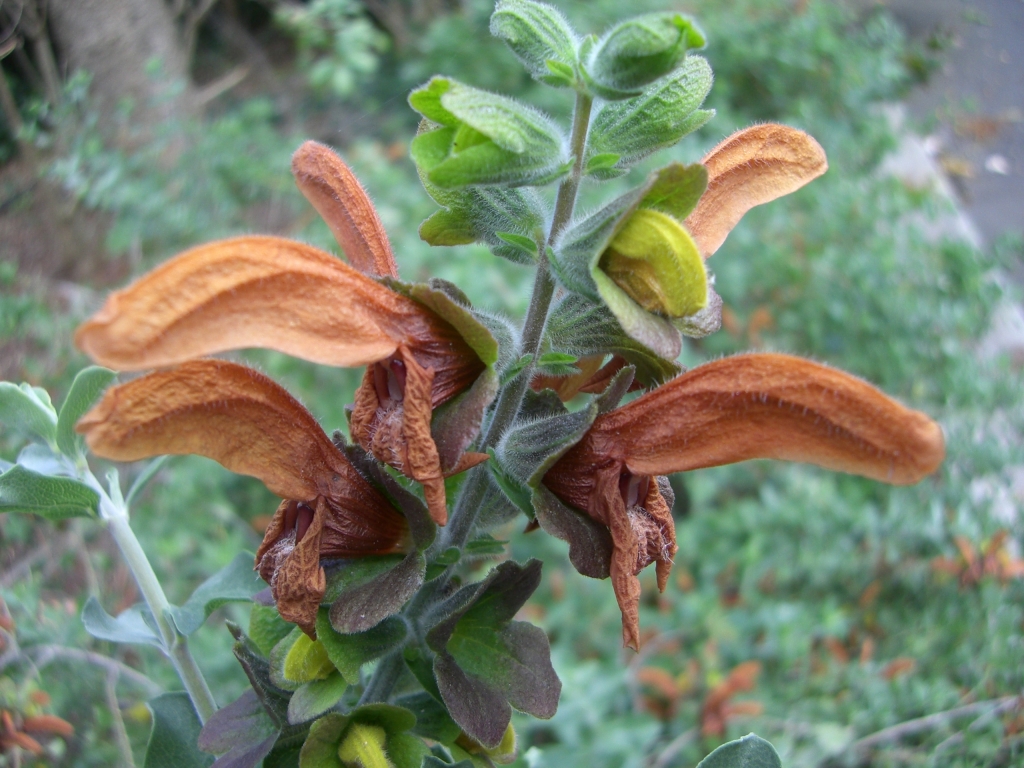Salvia africana-lutea
L.Much-branched shrub to 1.5 m high; branches densely and shortly tomentose, also with sessile glands. Leaves obovate to broadly elliptic, 1–3 cm long, 8–20 mm wide, surfaces minutely tomentose to velutinous, gland-dotted beneath, apex rounded, base cuneate, margin entire, often undulate; petiole 1–6 mm long. Inflorescences terminal spikes, 3–12 cm long; flowers in opposite pairs; bracts narrowly elliptic, shorter than calyces. Calyx 10–13 mm long (to 20 mm in fruit), 14-veined, moderately hairy, with short and long hairs and numerous sessile glands; corolla rusty-brown, 3.5–4.5 cm long, lobes much longer than tube, adaxial lobe c. twice as long as abaxial lobe. Flowers Jul.–Nov.
GipP, WaP. Known in Victoria only from foredunes between Warrnambool and Port Fairy, and first recorded in 1978, but population noted as 'rapidly expanding'.
 Spinning
Spinning